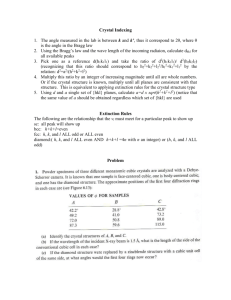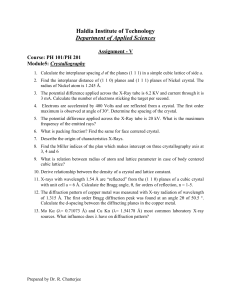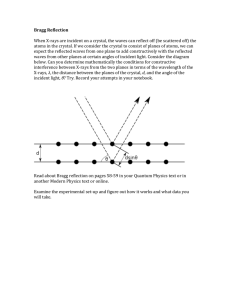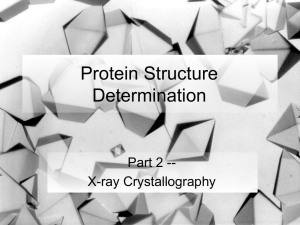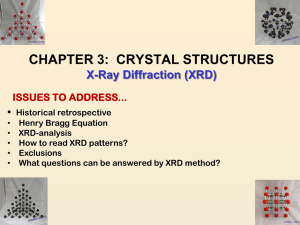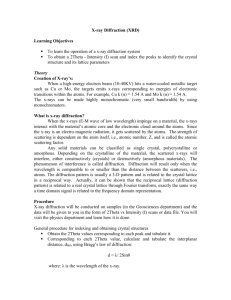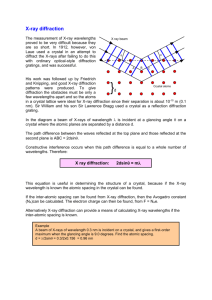X-ray Diffraction
advertisement
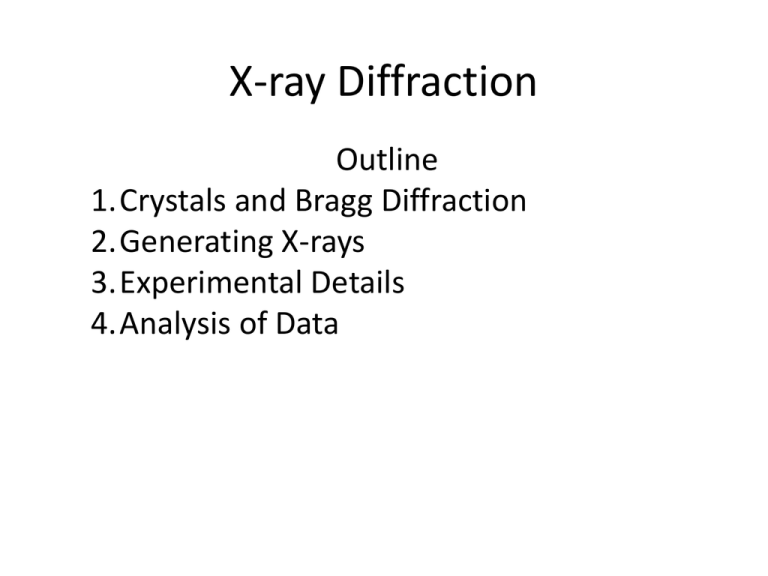
X-ray Diffraction Outline 1.Crystals and Bragg Diffraction 2.Generating X-rays 3.Experimental Details 4.Analysis of Data Crystal Structure Sodium Chloride example NaCl is a FCC crystal with a two atom basis http://www.dawgsdk.org/crystal/en/library/NaCl#0005 Real NaCl crystal similar to what you will use 14 Bravais Lattices in 3D Bragg Diffraction In a cubic crystal there is one lattice constant = ao but many sets of Bragg planes with spacings = d X-rays scattered from different planes have path differences given by: PD = 2dsin(q) and so will interfere constructively when PD = nl, or 2dsin(q) = nl - the Bragg condition In the case of NaCl, d = ao/2 for planes parallel to the crystal face and we get nl = ao sin(q) Generating X-rays Electrons are accelerated through high voltage to collide with a metal plate. In our case V = 35kV and the plate is molybdenum. Inner shell electrons are ejected by high velocity incident electrons – then transitions from an outer shell cause emission of characteristic x-rays Note that K lines predominate and that Ka energy < Kb energy Experiment The collimated x-ray beam diffracts from the crystal sample with the detector set at an angle of 2q where q is the incident angle the beam makes with the crystal planes. At each angle the detector accumulates counts for a fixed time, Dt, and then the sample/detector apparatus shifts the angle q by a fixed step (~0.1o) and repeats the measurement through a range of angles that can be pre-set. Apparatus Analysis of Data • The x-ray software package will give you a real-time plot of the detected intensity (cts/s) vs the diffraction angle (2q). • Save your measurements in a desktop folder • Locate the peaks by right clicking the mouse to select ‘calculate peak center’ – then mark the full width of each peak and record the center values and their SD, shown in lower left of display • Tabulate your results and plot the Bragg equation to find a best value for the lattice constant with its uncertainty for each crystal studied • Export your spectra and plot them up as your raw data in Excel graphs
